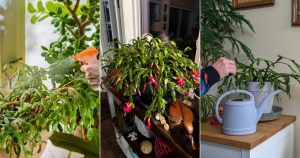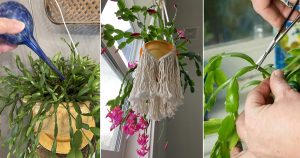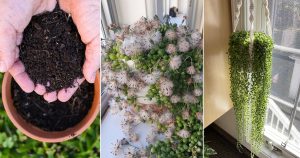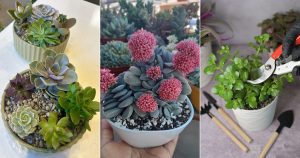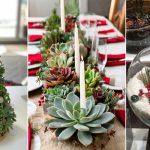Don’t toss that banana jacket just yet! Check out the magical effects of rubbing a banana peel on your jade plant leaves.
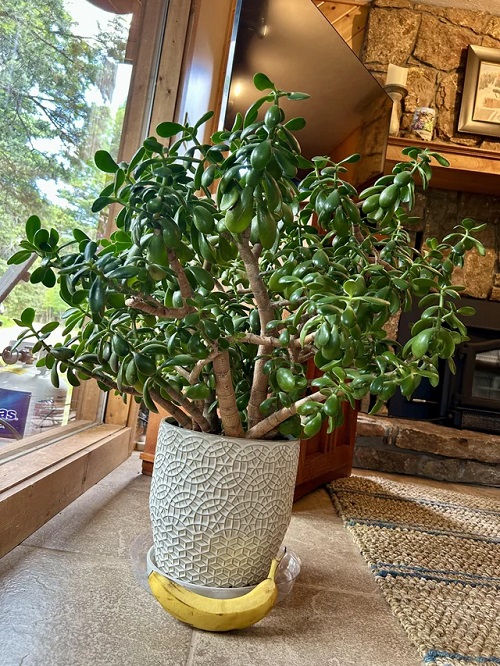
We all love bananas for their sweet fruit, but their peels often end up in the trash. What if I told you that this “waste” could work wonders for your jade plant? You don’t even have to compost it—just rub it on the leaves! Here’s how this odd but effective trick works.
What is Present in a Banana Peel?
Contrary to popular belief, banana peels contain a tremendous amount of nutrients. They might be hard to chew for humans, but if you test them in a laboratory, you will find the following:
1. Potassium
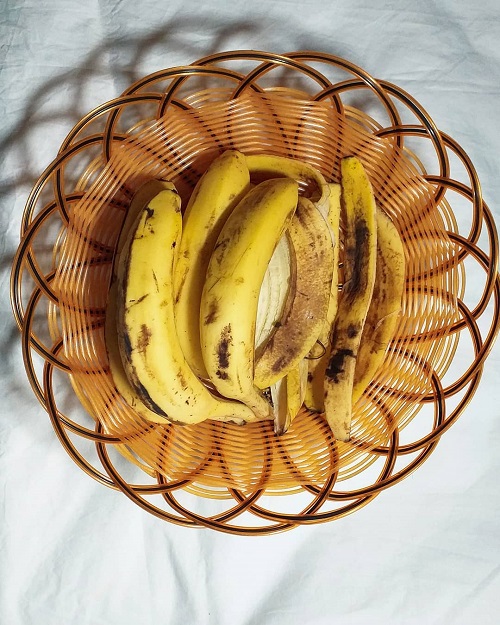
One of the most essential nutrients when it comes to overall plant growth and health. In fact, along with phosphorus and nitrogen, this element is the main component of most traditional fertilizers.
It aids the movement of water within the plant’s vascular tissues. Along with that, potassium also helps strengthen cell walls and improve the efficiency of photosynthesis! So, in short, this nutrient is a must!
2. Phosphorus
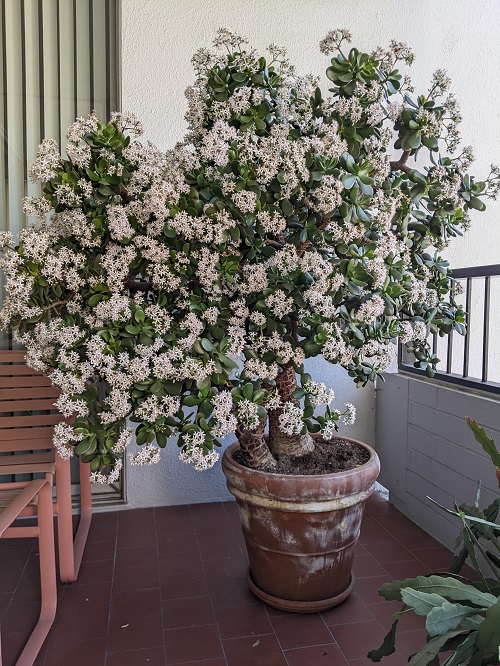
When you want your plant to flower, propagate, or create new foliage, phosphorus is running the show! It supports the entire energy system within the plant!
The main functions of this element are strengthening the root system, enhancing cell division, and repairing damaged parts. A healthy and sturdy root system ensures that the plant’s foundation is strong and it obtains all the other nutrients required for survival.
Cell division and repair work hand in hand, as they are both required for healthy growth and expansion of the plant!
3. Calcium
Just like how calcium is important for humans for a strong skeletal frame, it is necessary for plants to hold their cells together.
If you spot that your plant’s leaves are cracking, misshapen, or naturally damaged, a lack of calcium may be the reason. It is especially crucial for succulents as it helps them store water in their foliage or stems. And lastly, this nutrient makes your plant hardy and resistant to mild environmental stresses!
4. Magnesium
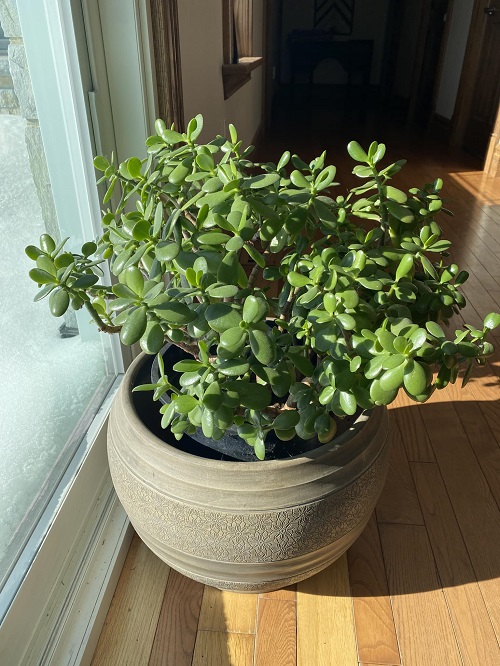
Did you know that magnesium is one of the building blocks of chlorophyll, which is responsible for the photosynthesis process? Yellow leaves or stunted growth are some of the signs that a plant is magnesium-deprived!
In simple terms, magnesium is required by plants for flawless photosynthesis, which generates more energy. This, in turn, is channeled into plant growth, development, and repair!
5. Trace Minerals
Along with the major components listed above, banana peels also have small amounts of other minerals such as zinc, iron, and manganese. Each of these plays a vital role in keeping your plant alive and thriving!
Benefits of Rubbing Banana Peel on your Jade Plant
Now that you know what a banana peel consists of nutritionally, learn what it does specifically for a jade plant.
Note: Since we specifically mention “rubbing,” the kitchen waste is not used as a traditional fertilizer but instead as a topical treatment.
1. Brings Out the Lustre
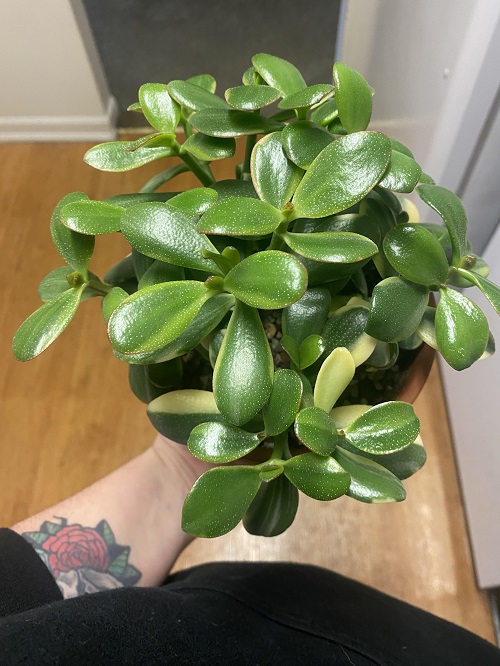
Polishing your shoes with shoe polish gives them a shine; similarly, rubbing your jade plant with the inside of a banana peel will coat it to produce a shiny glimmer! The natural oils coupled with the water content in a banana peel act as a natural wax with no side effects (if done properly).
Note: After rubbing your jade plant with a banana peel, ensure that there is no major residue that clogs up the foliage. This will invite pests, diseases, and hamper photosynthesis and transpiration.
2. Acts as a Cleanser for Improved Bio-Processes
Why do you use a face wash? To clear away the dust, dirt, and other contaminants that dull your appearance! In the same way, effectively using a banana peel will remove any residue present on the succulent’s foliage, which will lead to not only an improved look but also vital processes such as photosynthesis.
Dust prevents the optimal absorption of sunlight while also clogging up the stomata, which are necessary for the exchange of gases. Using a banana peel will get rid of this layer and enhance the plant’s functions.
3. Topical Fertilization
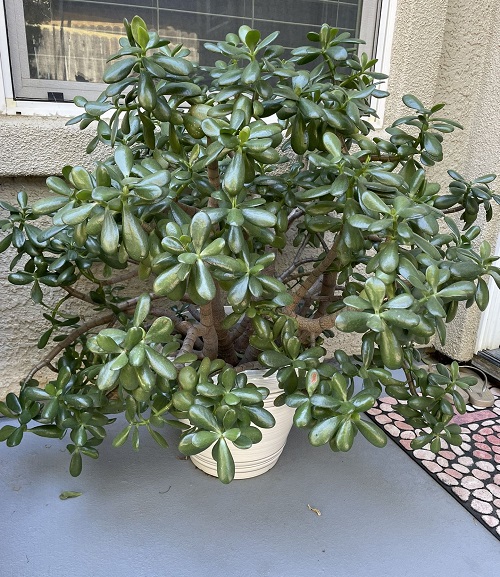
Although the most effective way of fertilizing jade plants is to add supplements directly into the substrate, rubbing a banana peel on the plant’s leaves creates a thin nutrient film. This is slowly absorbed by the plant and helps improve its look.
For an analogy, the diet of a human being is comparable to what is absorbed by the roots of a jade plant, but using moisturizers, shampoos, or toothpastes can improve the quality of the skin, hair, or teeth. And that is what this nutrient film will do, but in plant terms!
4. Improves Leaf Hydration
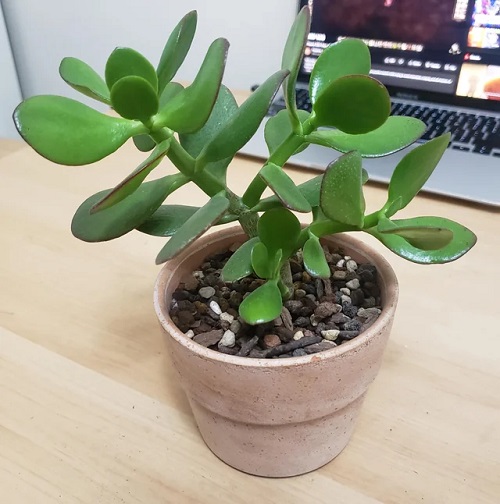
The moisture present in the gooey banana peel residue can keep your jade plant hydrated for longer periods of time. It also prevents excess loss of water by evaporation or transpiration.
This waxy coating also stimulates the plant temperature as it can cut down the direct impact of harsh sunrays.
5. Non-Toxic Alternative
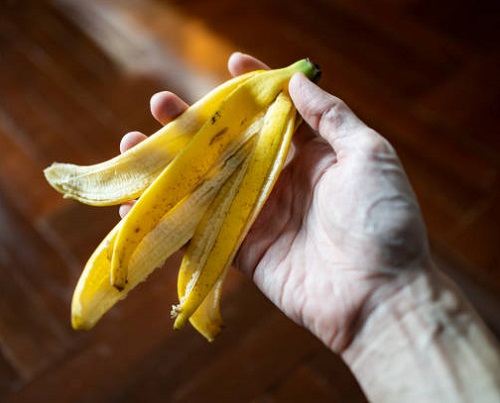
Since banana peels are naturally and organically obtained, they are not toxic to your plant at all. Most novice gardeners spend a small fortune on leaf shiners and plant aesthetic boosters, but all you need to improve the appearance of your jade plant is something you’d throw in a trash can!
Industrial leaf shiners contain harmful chemicals that, in the long run, damage the plant by seeping into the soil or being directly sucked in by the leaves.
Bonus Tip: You can even blend banana peels with a little water and strain the liquid to make a gentle “banana leaf spray.” Use it once a month for a natural shine boost.
6. Easy on the Pockets
This is the most obvious one! Most eco-friendly and budget-conscious gardeners utilize banana peels in various horticultural activities, including fertilization, composting, and leaf shine. For jade plants, all these are viable to improve your plant’s health.
Since it doesn’t cost a dime and is technically a DIY best-out-of-waste project, you are saving rather than spending!
Plus, it’s sustainable! You’re recycling food waste, reducing landfill contributions, and giving your plants a natural boost—talk about a win-win!
How to Properly Use a Banana Peel on Your Jade Plant?
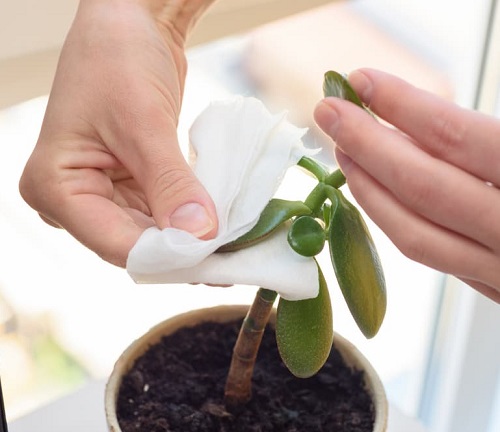
The process is simple yet effective. A few minutes every week and you are set!
- Take a fresh banana peel and rub the inner side on the leaves.
- If it feels too dry, mist it lightly with water first.
- After rubbing, gently wipe off any residue with a tissue or soft cloth.
- Repeat weekly or when your plant starts looking dull.
- Avoid using overripe or moldy peels—they can attract fruit flies or ants. And always be gentle; jade leaves are plump and delicate.
Now that you know how a simple waste item can be utilized to make a jade plant more attractive, please share in the comment section: Do you know any other tricks that may look unusual but are effective for the plant and cost-effective?

